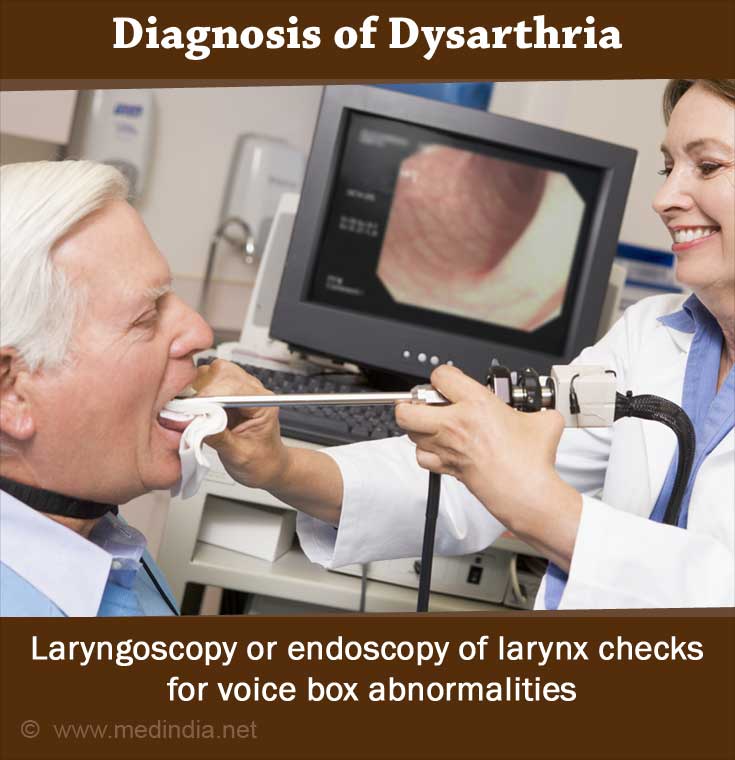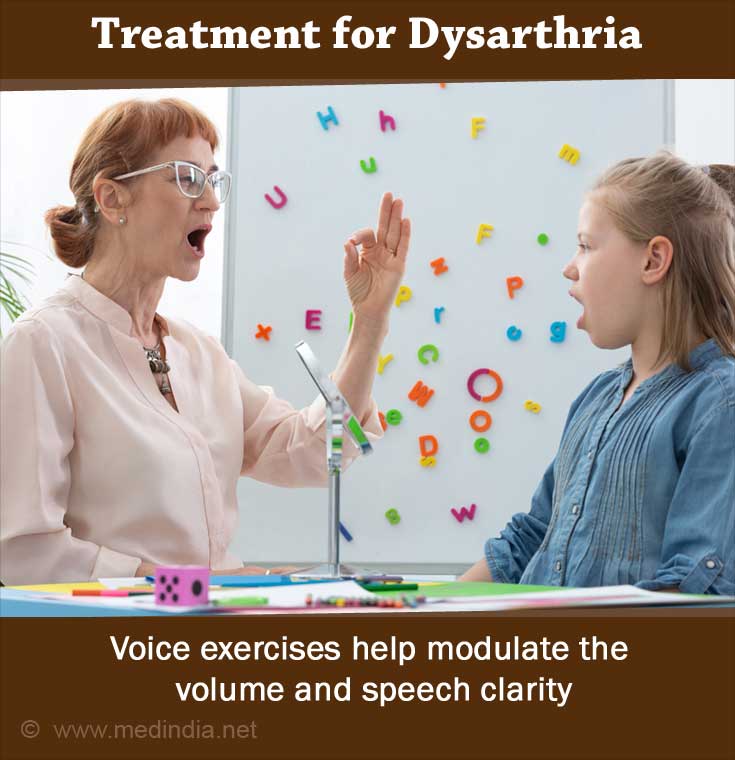- About Dysarthria - (http://www.mayoclinic.org/diseases-conditions/dysarthria/basics/definition/con-20035008)
- More Information on Dysarthria - (http://www.nlm.nih.gov/medlineplus/ency/article/007470.htm)
- Dysarthria - (http://www.asha.org/public/speech/disorders/dysarthria/)
What is Dysarthria?
People with dysarthria have slow or slurred speech which makes it difficult to understand.
Children or adults with dysarthria usually present with one or more of the following features:
- Slurred or nasal sounding speech
- Strained/hoarse voice
- Mumbling noises
- Extra loud or soft speech
- Monotone speech
- Uneven speech volume
- Difficulty with lip and tongue movements
- Swallowing difficulty (dysphagia) leading to constant drooling
People with dysarthria have issues with articulating words which makes it difficult to comprehend such speech. However, it should be noted that dysarthria does not affect intelligence or other comprehension skills. While the person may have a problem communicating in an articulate manner, he/she may have no problem thinking or comprehending.
What Causes Dysarthria?
Dysarthria can either be development or acquired.
- Developmental: in such cases, dysarthria is due to brain damages either before or during birth. Examples: cerebral palsy
- Acquired: in such cases, injury or damage to the brain later in life causes this condition. Examples: stroke, head injury, brain tumors, progressive neurodegenerative disorders like Parkinson’s.
Dysarthria can also be caused by rare/genetic disorders like:
- ALS (Amyotrophic lateral sclerosis or Lou Gehrig's disease)
- Guillain-Barre syndrome
- Huntington's disease
- Lyme disease
- Multiple sclerosis
- Muscular dystrophy
- Myasthenia gravis
- Parkinson's disease
- Wilson's disease
Other causes of dysarthria are:
- Head, face or neck trauma (due to accidents)
- Surgery for head or neck cancer which necessitates total/partial removal of the voice box/tongue
- Excessive alcohol intoxication

- Drug-induced (side effects of drugs like carbamazepine)
How to Diagnose Dysarthria?
The primary treating physician usually takes a detailed medical and familial history with the help of family and others. The root cause is usually ascertained in order to recommend a line of treatment.
A procedure called laryngoscopy is performed to check for voice box abnormalities. This is a partially invasive procedure where a viewing tube called laryngoscope is placed in the mouth and throat. A mild sedative may be given to lessen the discomfort.
Other tests include:
- Imaging of the head and neck like an MRI or CT scan
- Electromyography (EMG) to check the electric function of nerves or muscles

- Blood tests
- Lumbar puncture – where a needle is inserted into the lower back to obtain a sample of the cerebrospinal fluid for confirming disorders like Guillain-Barre syndrome and other underlying causes
- Swallowing studies
- Neuropsychological tests – to ascertain cognitive abilities and skills like reading and writing
After these initial diagnostics, the patient is referred to a speech and language therapist who will assess the extent of the problem. The therapist may ask the patient to perform certain tasks like:
- Making different sounds
- Making a conversation
- Reading a short piece
Based on the assessment, the therapist may decide on certain improvement therapies.
How to Treat Dysarthria?
Speech and language therapists usually work with improving the person’s ability to talk clearly. They also help the person cope and offer counseling and other tips. Speech and language therapists also train the person in using other methods of communication.
Some of the improvement therapies include:
- Voice exercises to modulate the volume and speech clarity
- Strategies to speak slowly
- Use of assistive devices like alphabet boards, amplifiers or computer voice output system
Treatment also includes counseling skills to enable the person cope with the demands of education, employment and social interactions.

Strategies for coping:
- Speaking slowly enables listeners grasp each word clearly
- Speaking economically and avoiding excessive use of unnecessary words
- Learning to use gestures when necessary
- Familiarizing with assistive devices that can take the place of speech communication
Support from family and friends
Some strategies for family, friends and other supporters for enabling better communication:
- Allow the person to talk at his/her own pace
- Do not interrupt or fill in words and phrases
- Talk normally to the person
- Let the person know if you have trouble understanding him/her






